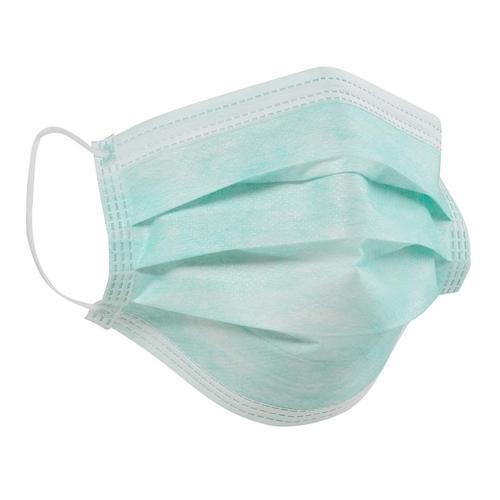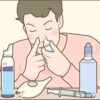We believe, the most important three things you need to store for you and your family’s health during the Coronavirus(COVID-19) are: mask, thermometer, and oximeter.
We believe, the most important three things you need to store for you and your family’s health during the Coronavirus(COVID-19) are:
- mask
- thermometer
- oximeter
Let’s explain more about why. We also provide all these product as a pack, contact us if you want to take a order.
Overview
1.Firstly, how to protect your self in public: MASK
How to choose mask?
2.Then, How to know if you have Coronavirus Symptoms: Thermometer
forehead thermometer reviews?
3.What if you do have the Symptoms but can not test in time and been aks to Self-Quarantine , how to monitor your health: Oximeter
What I should know before purchasing Oximeter? What is a normal reading on an oximeter? What level of oxygen is dangerous?

1.Firstly, how to protect your self in public: MASK
Do I really need to wear mask?
My personal suggestion is: YES, you should definitely wear a mask in public.
I know there are many experts said that you don’t need to wear mask if you and the people around you are health.(WHO: Coronavirus disease (COVID-19) advice for the public: When and how to use masks https://www.who.int/emergencies/diseases/novel-coronavirus-2019/advice-for-public/when-and-how-to-use-masks)
But the big problem is that: the Coronavirus has an 7 to 14 days incubation period, and a person who already got the virus may not have any symptoms but still can spread the virus to others.
So how can we tell if ourself or other people has already got the Coronavirus if there is no symptoms? I don’t think we can ,so what we can do is to protect our self and others by wearing mask.
How to choose mask?
There are many kind of mask in the market now, but which kind works for us? We will break it down for you.
Surgical masks or N95 mask?
It’s a very sample fact that N95 mask will be more protective than a surgical mask for sure, but one reason why we should still choose a regular surgical mask is that for most people who won’t deal with a lot of people like some public service staff or doctors who need to take care of 2019-nCoV infection patients, you don’t need to wear N95 mask, and let’s save it for the people who really need it.
2. Then, How to know if you have Coronavirus Symptoms: Thermometer
Do I have Coronavirus Symptoms?
Coronavirus has many Symptoms, some Symptoms like the regular flu like coughing, but some Symptoms is not like flu at all like diarrhea. But the most common Symptoms, which has been seen as one of the most important signal is fever.
Once your body temperature goes up to 37.3°C, you should call your doctor. So it’s essential to have thermometer in your house during this special time. And if you have multiple family member, I do suggest you prepare an no touch forehead thermometer to avoid cross infection.
thermometer reviews?
Here is a article that reviews many products in the market, and I don’t think we can do better than his.
The Best Thermometer for Kids and Adults
https://thewirecutter.com/reviews/best-thermometer-for-kids-and-adults/
We do provide forehead thermometer, let me know if you are interested.
3. What if you do have the Symptoms but can not test in time and been ask to Self-Quarantine , how to monitor your health: Oximeter
For people who do not know what Pulse oximetry is, Pulse oximetry is a noninvasive and painless test that measures your oxygen saturation level, how much oxygen is present in your blood and how well it is transported to the extremities.
Why oxygen saturation level is important for Coronavirus?
For example, if you have fever at home, but not major discomfort and you can not get the test or go to the hospital, how to monitor your health? Oximeter is very helpful for this case, because one of the sighs that means the patients is getting worse is the oxygen saturation going low.
What I should know before purchasing Oximeter? What is a normal reading on an oximeter? What level of oxygen is dangerous?
Normal: A normal ABG oxygen level for healthy lungs falls between 80 and 100 millimeters of mercury (mm Hg). If a pulse ox measured your blood oxygen level (SpO2), a normal reading is typically between 95 and 100 percent.
However, in COPD or other lung diseases, these ranges may not apply. Your doctor will let you know what’s normal for your specific condition. For example, it isn’t uncommon for people with severe COPD to maintain their pulse ox levels (SpO2) between 88 to 92 percentTrusted Source.
Below normal: A below-normal blood oxygen level is called hypoxemia. Hypoxemia is often cause for concern. The lower the oxygen level, the more severe the hypoxemia. This can lead to complications in body tissue and organs.
Normally, a PaO2 reading below 80 mm Hg or a pulse ox (SpO2) below 95 percent is considered low. It’s important to know what’s normal for you, especially if you have a chronic lung condition.
Your doctor can provide recommendations as to what ranges of oxygen levels are acceptable for you.
From HEALTHLINE: https://www.healthline.com/health/normal-blood-oxygen-level#oxygen-levels









Recent Comments